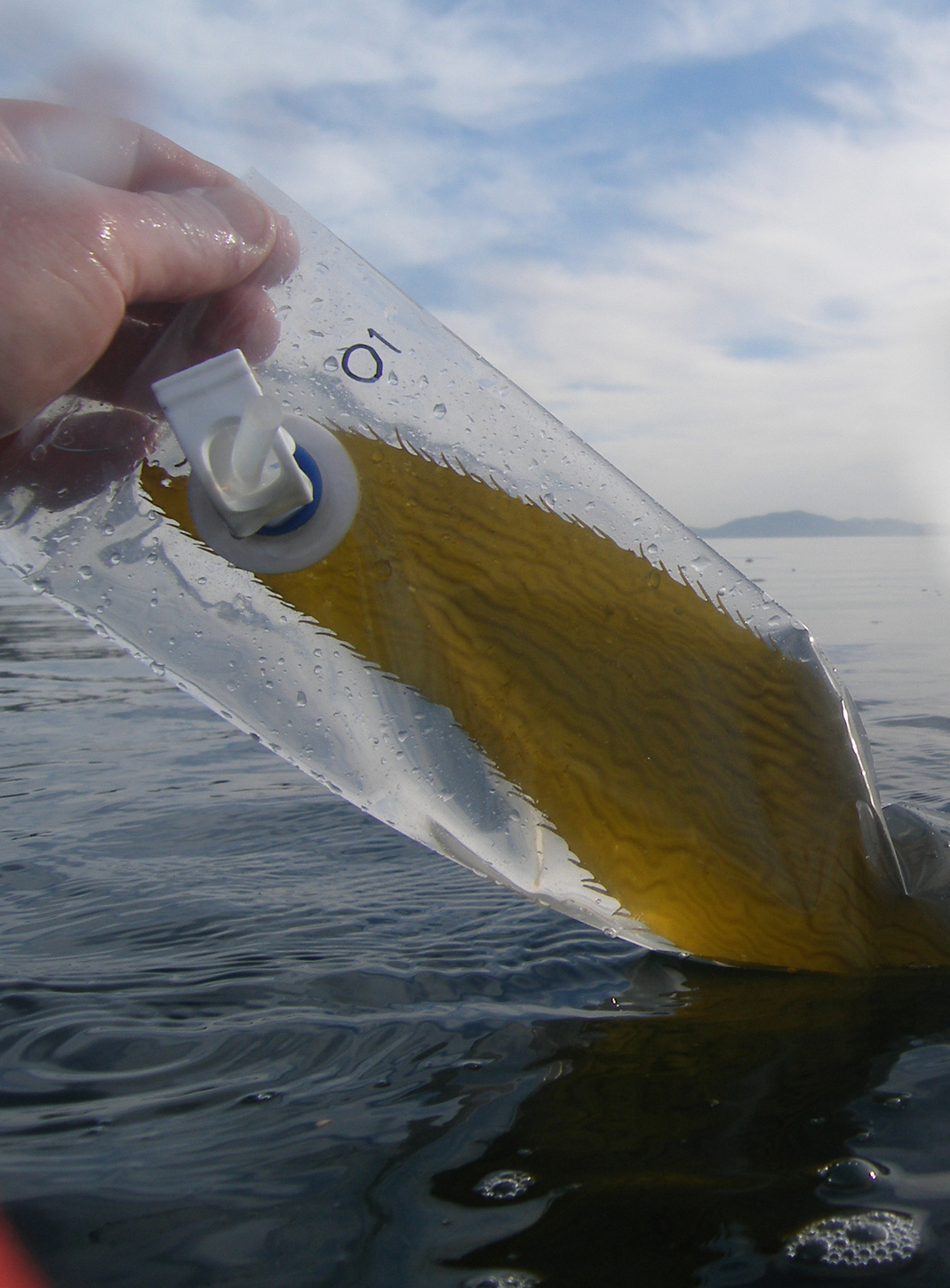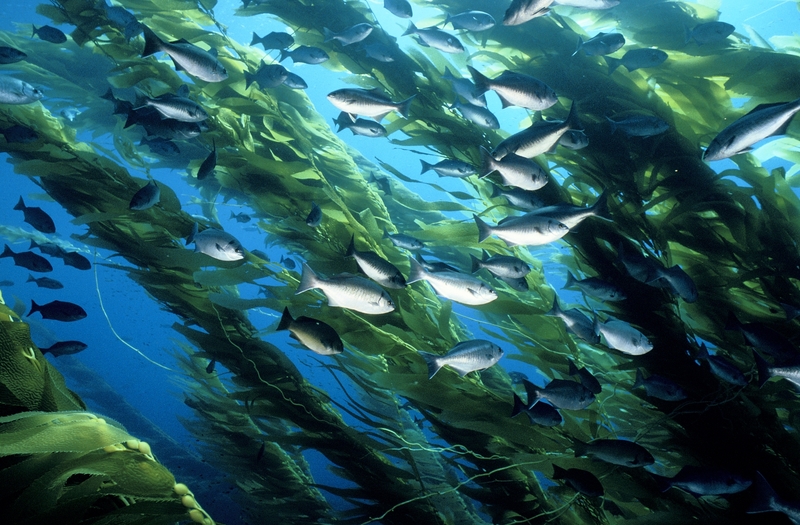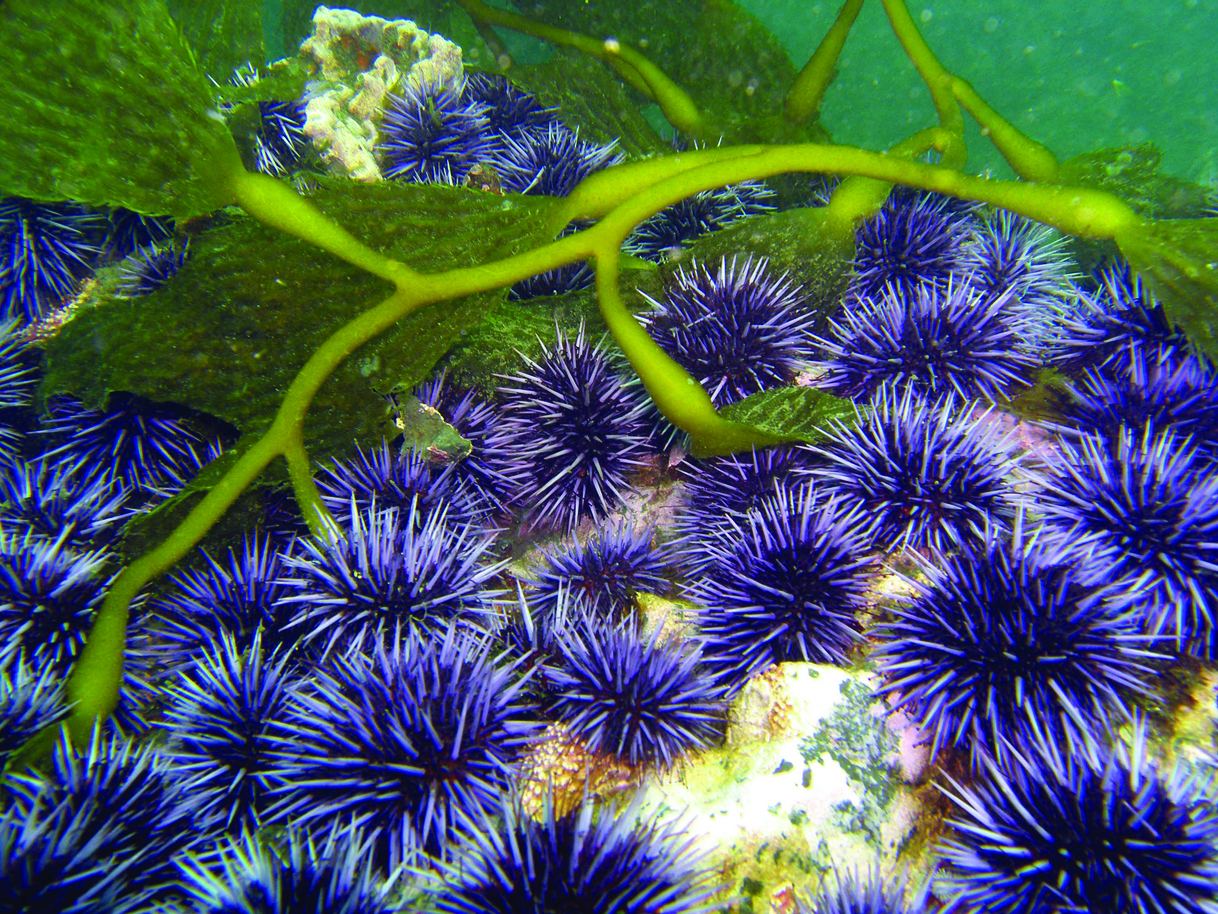SBC LTER Research
Theme 2. Dynamic biophysical coupling in kelp forest ecosystems
Our prior results showed that the physical structure of giant kelp alters water flow within the forest. Kelp’s high productivity and metabolism also alter the chemical properties of seawater and its organic constituents. How this biophysical coupling changes with oceanographic conditions and the size and density of the forest to affect the kelp forest community remains largely unknown. Our current research is aimed at quantifying:
- the biophysical effects of kelp on water residence time and chemistry
- how these effects interact with microbial communities to influence the processing and fate of dissolved organic matter
- the consequences of kelp-induced changes in seawater conditions on physiology, behavior and eco-evolutionary dynamics of kelp forest inhabitants
Giant kelp is a large source of C-rich dissolved organic matter and field work coupled with molecular studies are being used to understand the important role of microbes in the remineralization and trophic transfer of this material (below).


SBC researchers are investigating how kelp forest size and architecture modulate seawater flow and chemistry (e.g. pH, DO, pCO2, nutrients) across different seasons and environmental conditions.
Field and laboratory experiments are investigating how giant kelp modifies seawater pH and dissolved oxygen to affect the calcification, reproduction, metabolism and behavior of kelp forest consumers.
